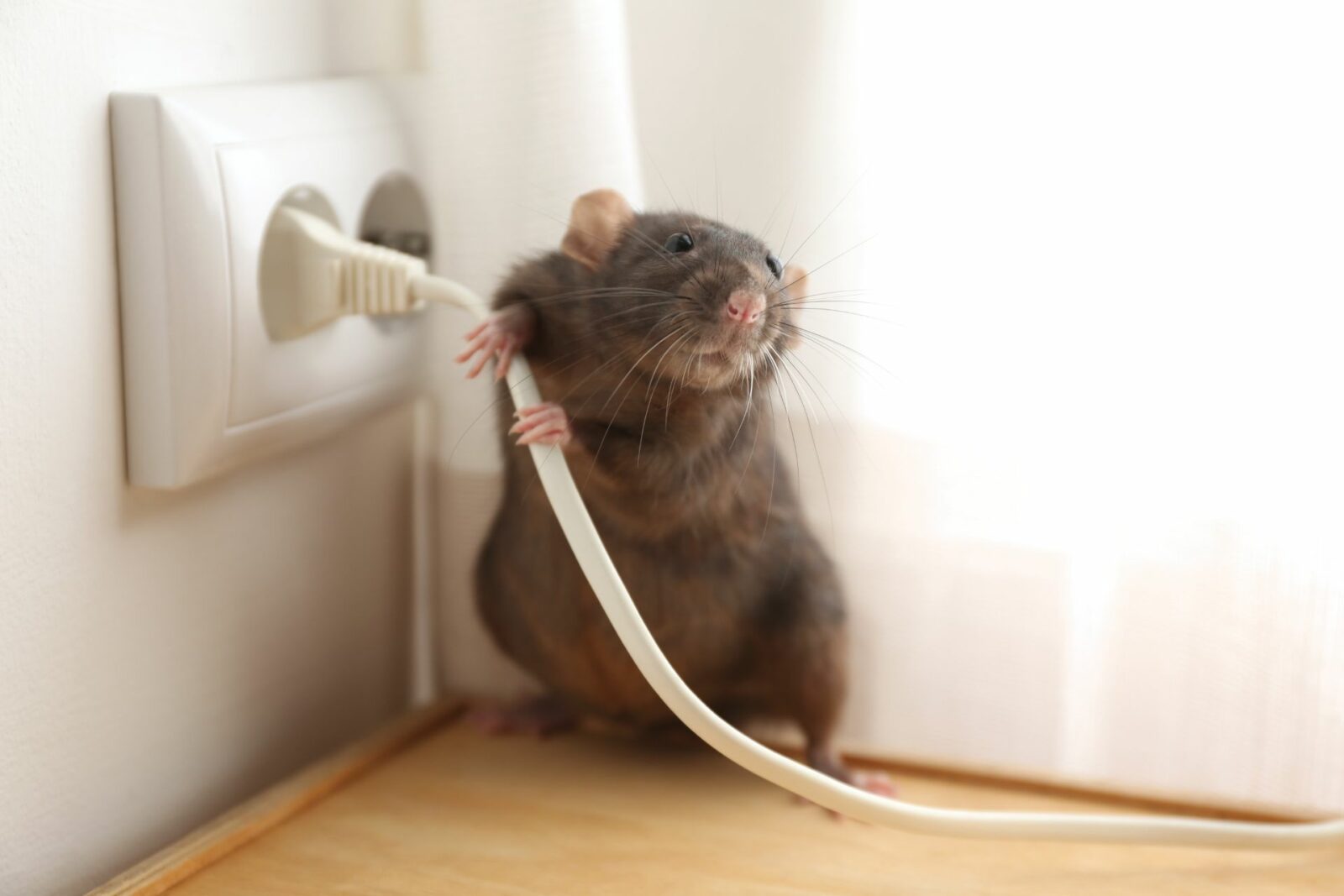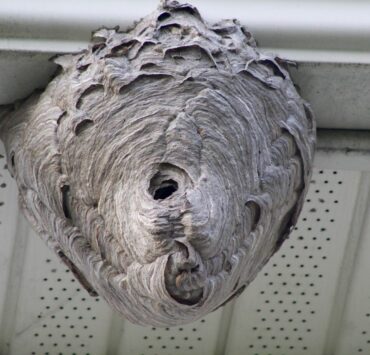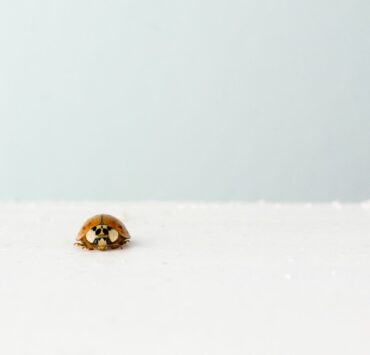Mouse infestation in walls can be a real headache for homeowners. These little pests can cause a lot of damage to your property and pose serious health risks to you and your family. On top of being a danger to your home and health, leaving the problem of mice in your home untreated will quickly become a bigger problem. Mice multiply quickly so it’s in your best interest to get on the problem as soon as you identify it. This article will take you through how to identify if you have mice in your walls and effective tips to get rid of them.
Signs of Mice in Your Home
All homeowners should be aware of the telltale signs of mice habitating their home. Since mice if nocturnal creatures, they can easily go by unnoticed until their numbers become much larger. Keep an eye out for any of the following signs that indicate you’ve got an unwanted rodent living within your walls.
- Droppings: Mice droppings are about 1/4″ in length and pointed on at least one side. They are usually found in areas where mice are active, such as along walls, behind appliances, and in drawers and cabinets.
- Nests: Mice make their nests out of paper, cardboard, fabric, and other soft materials. They often build their nests in secluded areas, such as inside walls, attics, and crawl spaces.
- Disturbed Insulation: Mice often use insulation to build their nests, which can lead to damage and disturbances in the insulation. If you notice any signs of disturbed insulation, such as holes or gaps, it’s a good indication that mice are present.
- Chewing and Gnawing: Mice have to gnaw on things to keep their teeth sharp and to gain access to food and nesting materials. They often chew on wood, plastic, and drywall, which can cause significant damage to your property.
- Squeaking: If you hear squeaking or scratching sounds coming from inside your walls, you can bet that you’ve got mice.
- Odor: Mice have a distinctive odor that is often described as musty or musky. If you notice a strong odor coming from areas where mice are active, it’s a good indication that you have a mouse infestation.
Dangers of Mice
Like other rodents, mice are notorious carriers of disease. They are known to carry a variety of diseases, including Hantavirus, Salmonella, and Lyme disease. Since mice reproduce quickly, it’s essential to address the issue as soon as possible to prevent the problem from getting worse and increasing the chances of your household contracting an unwanted disease.
How to Get Rid of Mice in Walls?
Seal Cracks and Entry Points
One of the best ways to prevent mice from entering your home is to identify their entry points. They’ll unlikely walk right through your doors and windows, and instead crawl through less disturbed areas such as cracks and other small spaces. Bear in mind that mice are flexible and can squeeze through spaces such as gaps around pipes, utility lines, chimneys and vents.
Once you’ve identified their entry points, clean the area and prep it appropriate for a sealant. Silicone caulk, spray foam and steel wool are common sealants to cover up mice intry points.
Trim Trees and Greenery
You may be surprised to find out that mice are excellent climbers. They can climb and jump from tree branches to end up on the roof of your home where many unknown entry points are open to them. To address this, make it a point to regularly trim trees and greenery so that mice can’t use it as a bridge into your home.
Use Mouse Traps
One of the most effective ways to get rid of mice in walls is to use mouse traps. There are several types of traps available, including snap traps, glue traps, and live traps.
Snap traps are the most common and are designed to kill the mice quickly. Glue traps are effective but can be inhumane as the mice can become stuck and suffer. Live traps capture the mice so you can release them elsewhere.
When using mouse traps, it’s essential to place them in areas where mice are known to be active , such as near walls, in attics, and in crawl spaces. You should also place them in areas where there are signs of mouse activity, such as near droppings or nests.
Be sure that you check the traps on a daily basis. Unless you want to deal with the smell of a dead mouse, check the traps regularly so you can quickly dispose the mouse accordingly. The same goes for live traps. The sooner you release a trapped mouse away from your home, the better.
Eliminate Food and Water Sources
Mice are attracted to food and water sources. To prevent them from entering your home, eliminate any potential food sources. Store food in airtight containers, and clean up any spills or crumbs immediately. Additionally, fix any leaky pipes or faucets to eliminate water sources.
Eliminate Hiding Spaces
Mice can hide in cluttered areas, so it’s essential to keep your home clean and organized. Eliminate any potential hiding spaces by decluttering and organizing your home. Store items in plastic bins or containers, and keep your floors clear of debris.
Call a Professional
If you’ve tried all of the above steps and are still having issues with mice in walls, it’s time to call a professional. A pest control company can assess the situation and provide effective solutions for rodent control in walls. A professional can also help prevent future infestations by sealing entry points and providing ongoing pest control services.
When choosing a pest control company, it’s essential to do your research and choose a reputable company with experience in rodent control. Look for companies that are licensed, insured, and offer warranties on their services.
Preventing Future Mouse Infestations
Preventing future mouse infestations is key to keeping your home rodent-free. Here are some steps you can take to prevent future infestations:
- Seal entry points: Check your home’s exterior regularly for cracks and gaps, and seal them as soon as you find them.
- Keep your home clean: Regularly clean and declutter your home to eliminate hiding spaces for mice.
- Store food properly: Keep food in airtight containers, and clean up spills and crumbs immediately.
- Fix leaky pipes and faucets: Repair any leaks to eliminate water sources for mice.
- Trim trees and bushes: Keep trees and bushes trimmed away from your home’s exterior to prevent mice from using them as a pathway into your home.
In conclusion, mouse infestation in walls can be a frustrating and stressful problem for homeowners. However, with the right knowledge and tools, you can effectively eliminate mice from your home and prevent future infestations. By identifying the signs of a mouse infestation, sealing entry points, using mouse traps, eliminating food and water sources, and calling a professional when necessary, you can keep your home rodent-free and protect your family’s health and safety.







